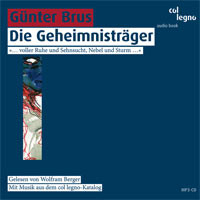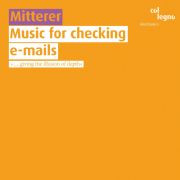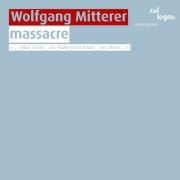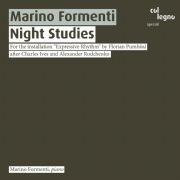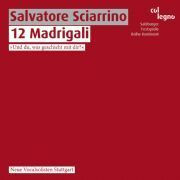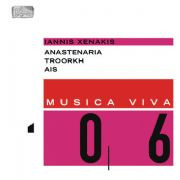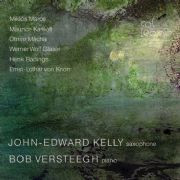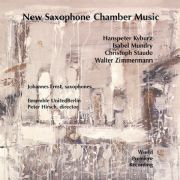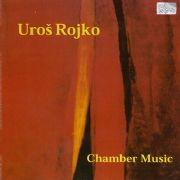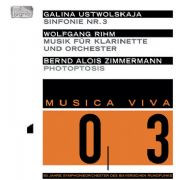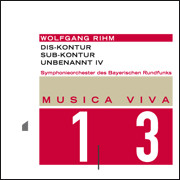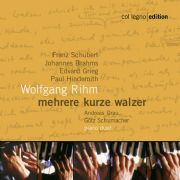★Col Legno
Die Geheimnisträge
A lovely audio book edition comprising more than six and a half hours of exceptional audio entertainment, read by Wolfram Berger and accompanied by music from the col legno catalogue. The legendary aktionist artist Günter Brus’ selection of music includes composers such as Wolfgang Rihm, Bernd Alois Zimmermann, Luciano Berio, Morton Feldman, Olga Neuwirth, Luigi Nono, Salvatore Sciarrino, Franz Koglmann and others.
Music for checking e-mails
Good news from your mailbox! Mitterer makes music on the subject of ambient in an electronic environment. Two amazing CDs with radical backgrounds.Mitterer’s CD in hand is about background music as a relative term, it’s about communicating via ›electronic post‹, it’s about the missing link between analog and digital ambient environments. Because Mitterer creates his instruments and then uses them in a unique way, electronic music for him has a unique vocabulary, one which in this day and age of …
Massacre
In "massacre" Wolfgang Mitterer presents us with a passionate analysis of a timeless threesome: power, religion and violence. An opera for five singers, nine musical instruments and electronics.Based on Christopher Marlowe’s drama »The massacre at Paris«, Wolfgang Mitterer paints an acoustic picture of destruction, conspiracy and the thrill of power. His protagonists virtually rid themselves of their identities, turning into typological representations of different points of view. The concrete e…
Night Studies
Somewhere between Alex- ander Rodchenko, Jackson Pollock and Charles Ives: Marino Formenti's piano studies based on an instal- lation by Florian Pumhösl as a listening experience! The brilliant Italian pianist has placed compositions by Charles Ives (»Thoreau« from the Concord Sonata, the song »Tom Sails Away«, and »Study 11«) under his magnifying glass and studied them, has taken them apart, searched them for resonances, assonances and silences, and confronted the results with Ives’ own methods…
Kontinent Varèse
On"Kontinent Varèse" col legno has assembled seven major works of a pioneer of electronic music, performed e.g. by the Ensemble Modern Orchestra, the RSO Vienna and Martin Grubinger!Edgar Varèse is regarded as one of the pioneers of New Music, and with good reason. His piece “Ionisation” was the first-ever composition written exclusively for percussion ensemble to be performed in a traditional concert hall setting; and he explored and searched intensely for sonic experiences. Varèse integra…
Melodies & Harmonies
Cage is by no means a synonym for obligingness. All the more astonished we listen to the melodious and harmonious objects Annelie Gahl and Klaus Lang present on this album. Lang, the trained organist and internationally renowned composer, performs these pieces on a Fender Rhodes for the first time. Gahl, known as a versatile interpreter of both Old and New Music, plays the violin exactly as requested by Cage, without vibrato and with minimum weight on the bow. The musical material dates …
12 Madrigali
Salvatore Sciarrino, in league with the Neue Vokalsolisten Stuttgart, embarks on the investigation of a new ecology of sound, through a form of polyphony reduced to chamber-music scale. The lyrics selected by the Italian composer are based on six haikus by the Japanese poet Matsuo Bashô (1644–1694). A comprehensive explanatory text on the production is contributed by Max Nyffeler. The world premiere of the work was recorded at the 2008 Salzburg Festival and is now made available on CD for the fi…
Darmstadt 2004
The "devil's organist" in action: if you really want to know what the "Queen of Instruments" is all about, make sure to experience Wolfang Mitterer play it live.Mitterer's organ event at Darmstadt in 2004 included not only works for organ solo but also synthetic sounds. In the piece mixture V (1995) he adheres to the principle indicated in the title, the mixture, in various respects – on the one hand in terms of organ technique and sound, on the other hand by his way of combining organ and elect…
Kraanerg
Apart from a large orchestra, Kraanerg, composed in 1968/69, requires audio feeds of recorded parts played by the orchestra and of the results of the manipulation of electro-acoustical phenomena. “I do not work with basic building blocks. I start afresh every time,“ Xenakis once said. This statement may help explain the extremely independent sonic universe created afresh in his compositions again and again. In the same vein, he rejects any attempt to foist semantic patterns onto the music of Kra…
Orchestral works and chamber music
ESSENTIAL RELEASE: The impulsive and electrifying Ata (1987) was referred to as "a kind of shifting of the senses" by the composer. The task of sketching N’Shima (1975) was actually assigned to a computer, whereas Metastaseis (1953-54) is devoted to architecture; the composition was derived from the bases of calculation used for the pavilion for the Brussels World's Fair of 1958 and is famous in particular for its glissandos and thickening clusters. Ioolkos, written for Donaueschingen in 1996, a…
Musica Viva 06
"Musica Viva 06" is another excellent release from the German Col Legno label, which specializes in the avant-garde. This disc includes three live performances -- the original 1981 recording of "Ais," featuring the incredible baritone voice of Spyros Sakkas, a new recording of "Troorkh," a trombone concerto, from 2000, and (drumroll please...) the world premiere of "Anastenaria," also from 2000, with the inimitable Xenakis champion Charles Bornstein conducting. As it turns out, "Metastas…
Saxophone & Piano 1
Maurice Karkoff (b. 1927) Sonatina fur Alt-Saxophon und Klavier (1985); Toccata -Varianter- Burla Henk Badings (1907-1987) La Malinconia (1949) Miklos Maros (b.1943) Undulations (1986); WernerWolf Glaser (b. 1910) Allegro, Cadenza e Adagio (1950) Otmar Macha (b.1922) Plac Saxofonu (1968) Ernst- tlothar von Knorr (1896-1973) Sonate fur Alt-Saxophon und Klavier (1932) Phantasie- Allegro Allegretto scherzando Signal. Works dedicated to the recording artists. JOHN-EDWARD KELLY, saxophone BOB VERSTEE…
Die Sephiroth
Buwen is both composer and organist, accompanying saxophonist Priesner on this rather academic program of duets. An earnest but dull remnant of late high modernism, the title piece inadvertently points up the limitations of classical sax technique, ignoring the expressive possibilities of the instrument almost completely. Buwen is self-effacing in the extreme, content to provide ground figures for Preisner to bounce off. Strange to think that one could write music this bland about a subject so c…
New Saxophone Chamber Music
Featuring compositions by Hanspeter Kyburz, Christoph Staude, Isabel Mundry, and Walter Zimmermann.
Chamber Works
One of the mysteries surrounding Jesús Rueda is the question how he was able to find a voice of his own, the various influences to which he was exposed during his development as a composer notwithstanding. He bid farewell to the constructivist rigor of Francisco Guerrero, and his pieces to do not immediately betray influences by Luis de Pablo, Giacomo Manzoni and Luigi Nono. Characteristic of his compositions are fast tempos, present in “slower” parts as brisk figurations, his sense of harmony a…
Chamber Music
It is with great shrewdness that Uroš Rojko has almost maxed out the unusual juxtapositions of an accordion with a viola and a piano, respectively. His fondness for the accordion may have its roots in his folk music past. On the present recording, however, these roots are not in evidence. Even the Tangos speak a language of their own, which Rojko creates by juggling characteristic fragments of tango, thereby reducing them to their essence. Even the first bars of his pieces exhibit the correspond…
Musica Viva 03
Musica Viva 03: Pleading for divine forgiveness, exploring the bounds of possibility of clarinets, and tricks of light.
Orchestral Works & Chamber Music
Music and the freedom of art: Wolfgang Rihm's aim is not to produce empty sound structures but to hit the bull's eye with direct and unexpected force.
Musica Viva 13
In his Dis-Kontur and Sub-Kontur, the young Rihm strongly revolted against the emotional coolness he en-countered in the style of the musical avant-garde.
mehrere kurze walzer
Franz Schubert may not have been an expert dancer, but he certainly was an extremely skilled composer of dance music. Most of his numerous dances – often miniatures comprising only a few chords – were improvisations created for special occasions, such as house parties. And many of these impromptu waltzes were noted down by Schubert later, including several pieces for piano four hands. Brahms, who held Schubert's music in high esteem, remained faithful to his own majestic musical language in his …
